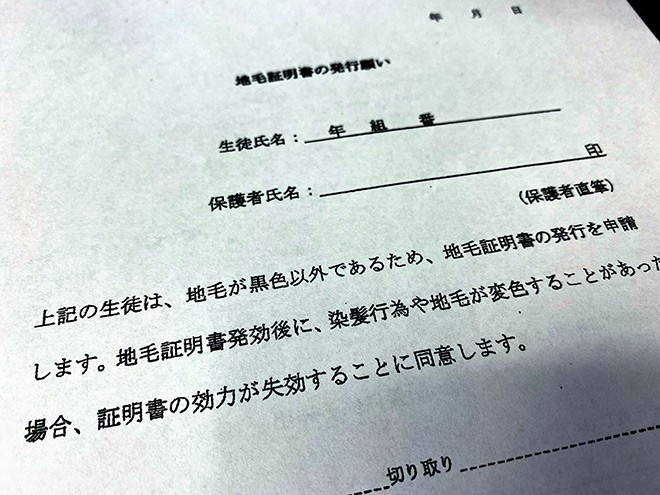
A hair color code is strictly enforced in nearly half of all high schools operated by the Tokyo metropolitan government.
Students coming to classes with wavy hair or locks that are not uniformly black must submit a document signed by their parents or guardians stating that it is their natural look.
The policy has been adopted by more than 40 percent of such schools in the metropolitan area, according to members of the Tokyo Metropolitan Assembly’s Japanese Communist Party who questioned the edict.
The issue of school rules regarding hair color is one that has come to court and sparked international interest in the rigid system that Japanese schools operate to encourage conformity.
The JCP, sensing that the issue was in violation of human rights, filed a request for information to be disclosed and was rewarded with a pile of documents handed over by the Tokyo Education Council.
Of the 177 metropolitan high schools for full-time students, 150, or 84.7 percent, had some form of regulation regarding hair. Seventy-nine schools, or 44.6 percent of the total, asked students to submit documents signed and sealed by their parents, stating that they had been born with a natural wave in their hair or a color other than black.
According to the documents, some schools even asked for photos of certain students when they attended primary or secondary school to confirm the accuracy of the information provided. In other cases, students had to provide documents from their doctors that backed up their claims about the natural state of their hair.
Some schools invalidated the documents if the student had even dyed his or her hair or had a perm in a hair salon once.
Some schools used a color scale so that students could judge their hair color.
Education board officials insisted that the documents were necessary to avoid situations where teachers scold students about their hair based on misconceptions.
They added that notices had been sent to individual schools asking them to explain to students and their parents that submitting the documents was completely voluntary.
However, an investigation by the JCP bloc in the Tokyo Metropolitan Assembly found that only five high schools had stated that this was the case.
“Registering a student’s hair color is a human rights violation, much like asking them to register their skin color,” said a JCP member. “It is a natural right to have the hair the student was born with and it is not something to be approved by others.”